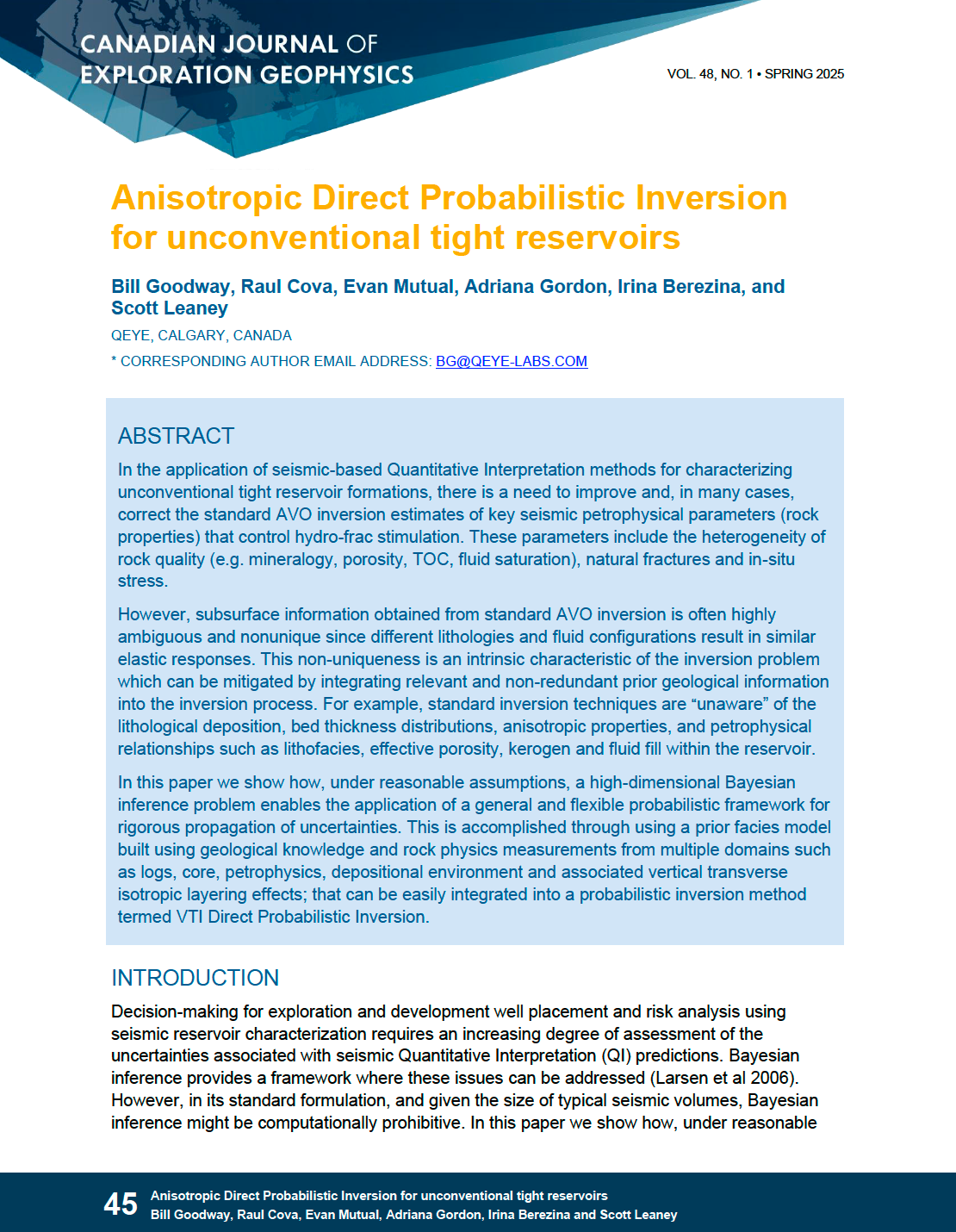Canadian Journal of Exploration Geophysics: Anisotropic Direct Probabilistic Inversion for unconventional tight reservoirs
In the application of seismic-based Quantitative Interpretation methods for characterizing unconventional tight reservoir formations, there is a need to improve and, in many cases, correct the standard AVO inversion estimates of key seismic petrophysical parameters (rock properties) that control hydro-frac stimulation. These parameters include the heterogeneity of rock quality (e.g. mineralogy, porosity, TOC, fluid saturation), natural fractures and in-situ stress.
However, subsurface information obtained from standard AVO inversion is often highly ambiguous and nonunique since different lithologies and fluid configurations result in similar elastic responses. This non-uniqueness is an intrinsic characteristic of the inversion problem which can be mitigated by integrating relevant and non-redundant prior geological information into the inversion process. For example, standard inversion techniques are “unaware” of the lithological deposition, bed thickness distributions, anisotropic properties, and petrophysical relationships such as lithofacies, effective porosity, kerogen and fluid fill within the reservoir.
In this paper we show how, under reasonable assumptions, a high-dimensional Bayesian inference problem enables the application of a general and flexible probabilistic framework for rigorous propagation of uncertainties. This is accomplished through using a prior facies model built using geological knowledge and rock physics measurements from multiple domains such as logs, core, petrophysics, depositional environment and associated vertical transverse isotropic layering effects; that can be easily integrated into a probabilistic inversion method termed VTI Direct Probabilistic Inversion.

